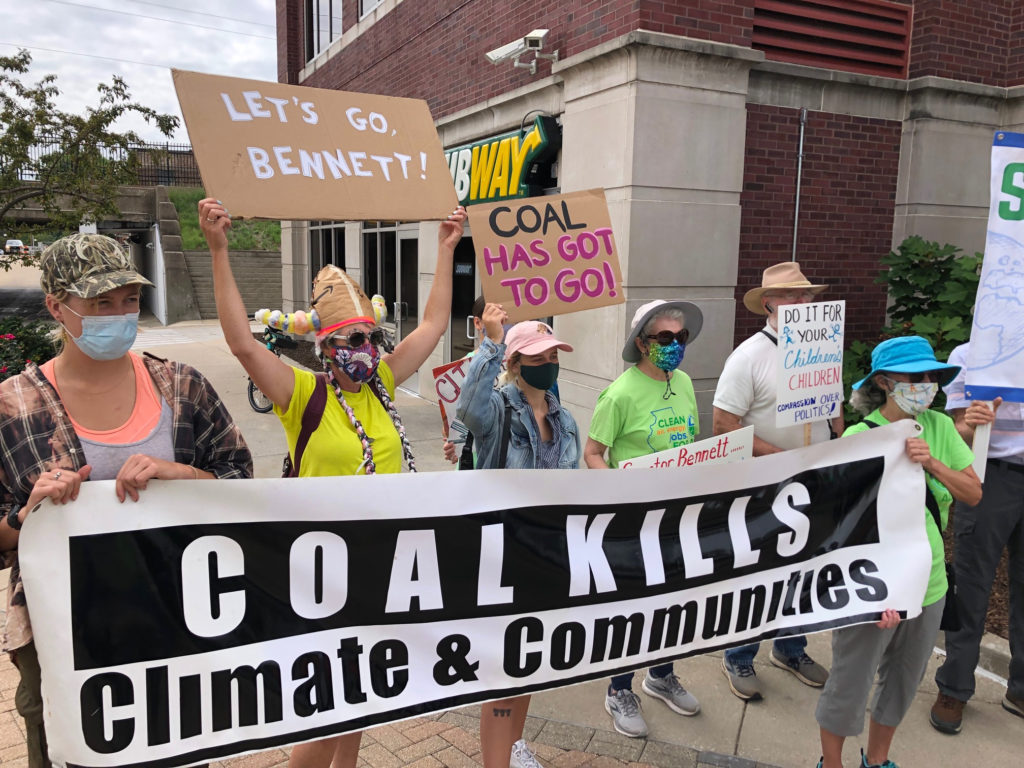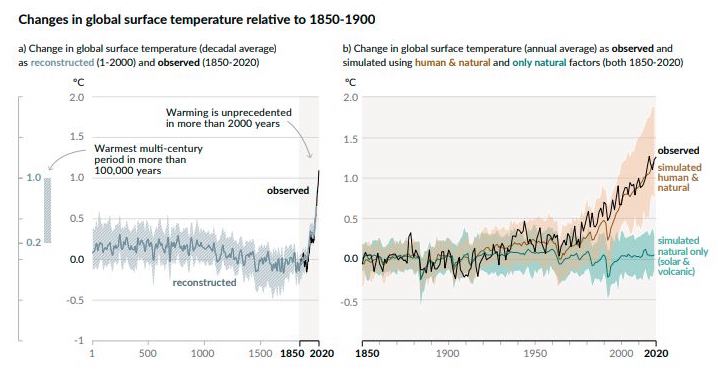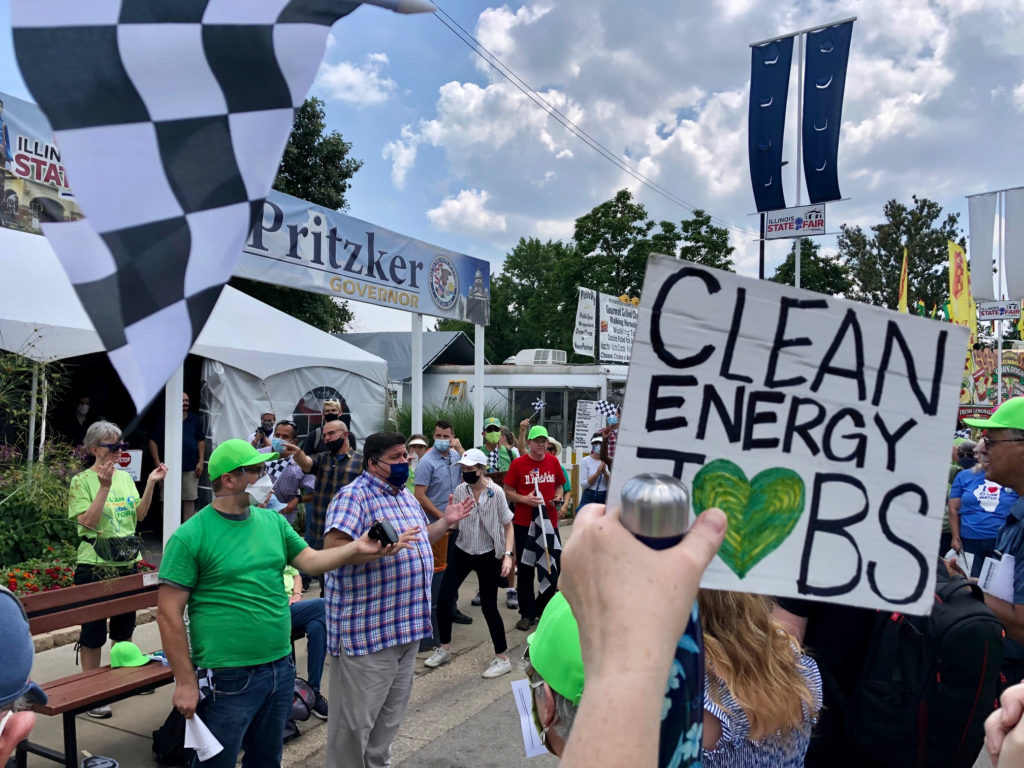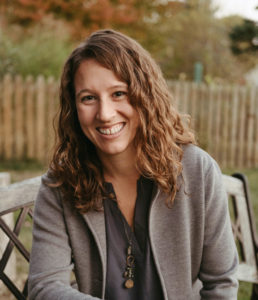
Activists on August 16 calling on Illinois State Senator Scott Bennett to support the equitable clean energy and climate bill
IPCC Issues a Code Red for Humanity
“Code Red for Humanity” has become the new rallying cry for climate action. The phrase was coined by United Nations Secretary General Antonio Guterres in reference to the August climate report, released as part of the Intergovernmental Panel on Climate Change (IPCC)’s “sixth assessment.” The Working Group I report, entitled “Climate Change 2021: The Physical Science Basis,” addresses the most up-to-date physical understanding of climate change.
But the IPCC has been sounding the alarm for over 30 years, with the first climate assessment dating back to 1990. The subsequent four reports, released every five to seven years, have played important roles in the adoption of the Kyoto Protocol and the Paris Agreement. The IPCC’s current assessment cycle includes three already released special reports, three working group reports, a methodology report, and the final Synthesis Report due for release in 2022. The Sixth Assessment Reports are expected to play a key role in informing the November, 2021 UN Climate Change Conference, and the 2023 Global Stocktake, when countries will review progress towards the Paris Agreement goal of keeping global warming to well below 2 degrees Centigrade (3.5 degrees Fahrenheit) while pursuing efforts to limit it to 1.5 degrees.

Human Influence on Climate “Unequivocal”
Since the last assessment, the scientific evidence that humans are indisputably responsible for the changing climate has continued to mount. August’s report took the strongest stance yet on the issue, calling human influence on climate “unequivocal.” The latest science estimates that human-caused global surface temperatures have increased 1.07°C (1.93 °C) between 1850–1900 and 2010–19. Warming is accelerating and global surface temperatures have increased faster since 1970 than in any other 50-year period over at least the last 2000 years. The report details, again with ever-increasing certainty, how human-induced warming is already affecting many weather and climate extremes in every region across the globe, including increased globally averaged rainfall and sea levels, decreasing snow cover, retreating glaciers, and the warming and acidifying of the oceans.

Warming Continues, but How Much is Up to Us
In addition to laying out the science of what is already happening, the report assesses the predicted future climate response to five different scenarios of varying levels of greenhouse gas (GHG) emissions. The “very low” and “low” scenarios have emissions declining to net zero by around 2050, followed by varying levels of net negative emissions. The “intermediate” scenario has emissions remaining around current levels until the middle of the century before declining. And finally, the “high” and “very high” scenarios see emissions rise, reaching double current levels by 2100 and 2050, respectively
Under all emissions scenarios, global surface temperature will continue to increase until mid-century; and even under a “very low” emissions scenario, temperatures will likely increase 1.2–2.0°C (2–3.5°F) by then, decreasing slightly to 1.0–1.8°C (2–3°F) by the end of the century. The “intermediate” scenario results in warming of 2.1–3.5°C (4–6°F) by century’s end, and during the same time period a “very high” scenario results in 3.3–5.7°C (6–10°F) of warming.
This Report reaffirms with more certainty that with every increase of global warming, changes in weather and climate extremes continue to become larger. The report’s findings and reason for alarm are clear: unless there are immediate, rapid, and sustained reductions in emissions, followed by net zero emissions, the goals of the Paris Agreement will be far beyond reach and our planet will become less livable.
Illinois Takes Action on Climate
In early 2019, with a lack of federal leadership on climate, Illinois Governor J. B. Pritzker signed Illinois onto the US Climate Alliance, a group of states committed to reducing greenhouse gas emissions in support of the Paris climate agreement. Under his leadership and after three years of work and leadership by grassroots advocates, Prairie Rivers Network and our partners at the Illinois Clean Jobs Coalition, Illinois passed a groundbreaking climate bill this September.

Advocates for climate action join Governor Pritzker in August at the Illinois State Fair to push for the climate bill
The Climate and Equitable Jobs Act (CEJA) is being lauded as the most equitable climate bill in the nation. CEJA tackles climate change and pollution by reducing carbon emissions, expands incentives for renewable energy, creates programs to support the training and growth of a diverse clean energy workforce, and holds utilities accountable while creating consumer protections. And it does each and every one of these things in a just and equitable way.
Decarbonization
CEJA requires all private coal- and oil-fired electric generating units (greater than 25 megawatts) to eliminate carbon emissions by 2030. Private natural gas-fired plants must eliminate carbon emissions by 2045, with interim closure dates in 2030, 2035, and 2040. Those interim closures will prioritize plants in environmental justice communities and those with the dirtiest emissions. One of the bill’s biggest obstacles was the future of the Prairie State Coal Plant, the nation’s seventh largest polluter. In months of negotiations that nearly killed the bill, environmentalists, labor, and fossil-fuel-friendly elected officials finally arrived at a compromise. Prairie State and other municipal and privately owned coal must be 100 percent carbon-free by 2045, with 45 percent emissions reductions by 2038.
Renewable Energy and an Equitable Workforce
The bill sets Illinois on a path to 100 percent clean energy by 2050, and expands funding for renewable energy projects to get to 40 percent renewable energy by 2030 and 50 percent by 2040. It prioritizes an equitable clean energy future by establishing new workforce and business development programs targeting investment in and opportunities for traditionally underserved individuals and communities. For example, it establishes a network of 13 workforce training hubs across the state and creates a program to train soon-to-be released incarcerated people for jobs in the solar and energy efficiency sectors. The bill includes several grants and funding opportunities for equity-eligible businesses, including the establishment of a new Illinois nonprofit “green bank” that focuses on equitable lending and business development.
What’s Next in Illinois
Illinois has made great strides in fighting climate change in an equitable way, and we are setting an example for action at the federal level as well. But have we taken the level of action that a “code red” alarm calls for? There are several areas where we could stand to make additional gains, and they include:
- Prairie State Coal Plant—real climate action in Illinois’ must address emissions from our largest GHG emitter on a more aggressive timeline.
- The transportation sector—CEJA has begun to promote the electrification of the transportation sector, but more is needed.
- Coal mining—a recent analysis by the Chicago Tribune found that in 2020, the burning of Illinois coal (most of which is burned out of state) resulted in the release of more than 57 million tons of carbon dioxide.
- Building electrification—CEJA does not address home heating and cooling, a sector that represents 18 percent of Illinois’s energy-related emissions.
- Agriculture and land use—land management practices provide opportunities to reduce GHG emissions and increase carbon storage. Illinois is beginning to take action on a 30×30 campaign, with a goal to protect 30 percent of Illinois land by 2030.
Please consider joining efforts in your community and statewide in fighting climate change, including becoming a member of Prairie Rivers Network (www.prairierivers.org) and other organizations leading this work.

Amanda Pankau is Energy Campaign Coordinator for Prairie Rivers Network, working with advocates, leaders, and communities to realize the benefits of clean, renewable energy and address the costs of non-renewable sources, such as coal. Previously she worked as an environmental consultant on coal mining issues in southern Illinois, and as a leader and organizer in the region’s local food system. She lives in Monticello with her husband, two young sons, dogs, and chickens.
798 total views, 3 views today
